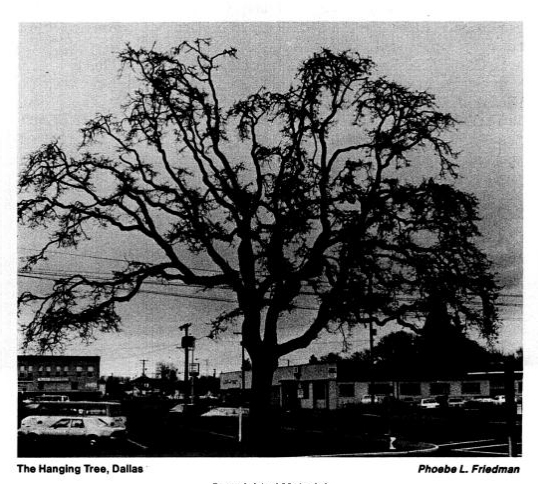In Resist, award-winning journalist Rita Omokha charts the last century of civil rights activism, from the early years of renowned activist Ella Baker and others she inspired, to the first glimpse of allyship in the Bates Seven and a renewed examination of the Black Panther Party, all the way to the current generation of young Black revolutionaries who walked American cities in the wake of the murders of countless Black people. In this excerpt from Chapter 7, Rita explores the importance of the Jena Six, “…a generation of young Black activists mustering for change, brimming with righteous indignation. Injustice had hung heavy in the air for them, animating a collective demand for accountability and an end to police brutality against Black bodies.”

AUGUST 31, 2006. JENA, LOUISIANA.
In the morning light, three nooses hung ominously from a giant oak tree’s leafy branches outside Jena High School.
There had been an unspoken rule.
A privilege, really.
Only white students were allowed to sit under the oversized tree. Until Wednesday, August 30, 2006, when Kenneth Purvis, a Black sophomore, asked administrators during a school-wide assembly if he, too, could sit under the tree’s shade. The answer was yes.
The next day, the nooses appeared.
The Black student body immediately felt the pang, the racial friction sparking. They saw the nooses as a threat. A Jim Crow intimidation tactic. A message for them to know their place.
A symbol of hate.
“The first thing that came to mind was the KKK,” Robert Bailey, one of the Black teens there that morning, later said. “I don’t know why, but that was the first thing that came to my head. I used to always think the KKK chase Black people on horses, and they catch you with rope.”
Something had to be done.
“Y’all want to go stand under the tree?” Kenneth asked other Black students in the courtyard that Thursday.
“They said, ‘If you go, I’ll go. If you go, I’ll go.’ One person went,” Kenneth said as he remembered the launch of their sit-in. “The next person went, everybody else just went.”
During their impromptu demonstration, Reed Walters, the town’s district attorney, unexpectedly showed up flanked by armed police officers. Their arrival, a chilling symbol of authority, cast a long shadow over the peaceful gathering. “See this pen in my hand?” Reed yelled at the baffled teens. “I could end your lives with the stroke of a pen.”
In the end, six Black teens were expelled from school for their sit-in.
Furious at the blatant display of bigotry and the unconscionable outcome, Scott Windham, the school’s white principal, demanded the expulsion of the three white teens found to be responsible for the nooses. However, the white superintendent of the 2,700-student LaSalle Parish School District, Roy Breithaupt, denied the request. Instead, he doled out a slap-on-the-wrist punishment for the three white students: a nine-day alternative school program followed by a two-week in-school suspension. Unable to condone such an egregious mistreatment and display of inequity, Scott resigned in protest.
In the 1990s, race relations in the piney woods of Louisiana were complex and strained. By the time the 2000s came around, demographic shifts led to a growing Black population and continued public school integration, fueling anxiety among white residents.
This was especially true in Jena, where 90 percent of the 4,000 residents were white. Like many places in the American South, Jena had long grappled with a nuanced history of racial bias and discrimination. The demographic shift only exacerbated existing tensions and disparities, exposing deep-seated fears rooted in the town’s segregated past.

By 2006, the integrated student body of 521 at Jena High was primarily white, representing about the same racial split as the district, which was about 85 percent white.
When news of the nooses began to trickle out of small-town Jena, Billy Wayne Fowler, a white member of the LaSalle Parish School District Board, said that Jena was being unfairly painted as racist. He called the actions of the three white teens a prank, saying it was blown out of proportion.
“This is the Deep South. Black people know the meaning of a noose. Let me tell you something—young people don’t,” he said. “You can’t overlook the seriousness of hanging the nooses, but I don’t think our young people understood the significance of that symbol” as an explicit reminder of the prolonged history of lynchings of Black Americans.
Further infuriating the community, who were demanding answers, the Black teens’ appeal of their expulsion to the school board was met with a wall of secrecy. The district conducted an investigation but never shared its findings with the board or the public. The lawyer acting on the board’s behalf was Reed Walters, the same district attorney who had threatened the Black students during their sit-in.
Of the investigation findings, Billy said Reed was the “legal authority” who told the board “it was a violation of something” to show the findings to the board or community members. To bolster his claims, Reed said it wasn’t a crime in Louisiana to hang a noose, because no criminal statute existed. So, the board was forced to vote on the teens’ appeal without the investigation findings. All but one, the sole Black board member, Melvin Worthington, voted to uphold the Black students’ expulsion, which only exacerbated festering racial tensions.
Incensed, some Jena residents reached out to the FBI to investigate. Federal authorities, including FBI agents and officials with the Department of Justice civil rights division, descended on Jena. After looking into the case, they were unable to prosecute the white teens for hate crimes because they found that the three minors acted alone, without any coercing from adults or hate groups. They also said juveniles were rarely prosecuted in federal court. Since the school had already penalized them, they felt that was sufficient.
By late fall, the racial tension remained palpable on campus, leading to a series of confrontations. At every turn, each gaze seemed a threat.

